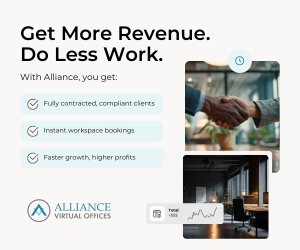- A new survey reveals tuition reimbursement is becoming one of the most sought-after benefits for Gen Z students entering the workforce.
- Tuition reimbursement is a strategic investment that benefits employers by helping to build a more skilled and loyal workforce.
- Gen Z values tuition assistance as part of a competitive compensation package and career development.
Amid soaring higher education costs and mounting student debt, Gen Z jobseekers are sending a clear message: tuition reimbursement is now a must-have workplace benefit.
A new survey reveals a significant change in candidate priorities, with 61% of respondents citing tuition assistance as a top factor when evaluating job offers.
Career growth and debt relief now outweigh traditional perks such as gym memberships or free lunches for this generation. Forward-thinking companies are responding by offering tuition reimbursement to attract and retain top Gen Z talent.
For employers, helping young professionals manage their financial burdens is not just the right thing to do — it’s also a smart business strategy.
Why Tuition Reimbursement is a Must-Have for Gen Z Jobseekers
A 2022 survey reported by Allwork.Space revealed that one in three workers would consider changing jobs for employers offering education opportunities.
By 2025, with the rising cost of higher education and the growing burden of student debt, Gen Z job seekers are placing increasing value on education benefits when evaluating potential employers.
Major companies, including Disney and Starbucks, have already recognized this priority and are offering tuition reimbursement programs to attract and retain top talent. By funding degrees, these companies help build a more skilled, loyal, and satisfied workforce.
A ScholarshipOwl survey of 12,998 high school and college students found that tuition reimbursement is a key consideration when evaluating job offers. The survey reveals that 93% of Gen Z students believe employment perks will significantly impact their career choices, with 61% prioritizing companies that offer education benefits — including tuition reimbursement or student loan assistance.
“The ever-rising cost of college is something that Gen Z students are really aware of, and frustrated by,” Jennifer Finetti, Director of Student Advocacy at ScholarshipOwl, shared. “As a result, students often have to take out loans to pay for college, or they may need to work part-time or full-time to be able to afford to enroll.”
By supporting continued learning and skill-building, employers position themselves as organizations that value personal and professional growth — qualities that strongly resonate with Gen Z.
Finetti notes that employees who actively pursue education are often seen as more prepared for leadership roles, making tuition reimbursement vital for retention and talent pipeline development.
As competition for top talent intensifies, offering tuition reimbursement has become a key differentiator for employers. Not only does it ease the financial burden of student loans, but it also demonstrates a long-term commitment to career growth.
In today’s competitive job market, employers that offer tuition reimbursement are better positioned to hire and keep the next generation of talent. These programs are essential for staying competitive and securing top talent.
Launching a Tuition Reimbursement Program: What Employers Need to Know
Setting up a tuition reimbursement program can be a valuable way for companies to support employee growth and development.
However, aside from just support, clear policies, smart budgeting, and a firm commitment to the program are also essential. Finetti advises employers to consider four things when launching these programs:
1. Start with a Plan
Begin by conducting thorough research and creating clear, realistic guidelines for the program.
Consider what expenses you will cover, who qualifies, and how employees can access the benefit. Transparency is key — employees make significant decisions based on the availability of tuition reimbursement, and you do not want them to enroll only to find out the funding is no longer available.
Finetti recommends starting small by rolling out a targeted version of the benefit before expanding it. For example, you could limit the program to employees with at least one year of service — this gives new hires something to strive for and helps them manage costs early on.
2. Set Boundaries and Approval Processes
It is wise to require pre-approval before employees enroll in a program. Finetti explained to Allwork.Space that companies may want to reimburse only for degrees that directly benefit the business:
“For example, a logistics company would see value in an employee obtaining a degree in business but would not see value in an employee pursuing a culinary degree.”
Consider implementing annual or lifetime reimbursement caps. Finetti suggests starting with modest limits, such as $2,000 per year or $6,000 over a career, and adjusting as the program grows.
Accreditation is another key factor. Only engage with accredited schools to protect both your company and your employees.
Finetti recommends that employers verify schools through one of the seven recognized regional accrediting bodies because of the existence of fraudulent accrediting bodies.
3. Budgeting and Cost Management
Balance the program’s value with your budget because tuition reimbursement can be expensive. Work with your finance team to set a reasonable spending limit. It is important to remember that not every employee will use the benefit, but it is advisable to plan for higher-than-expected participation.
Don’t overlook tax breaks. Generally, employers can claim up to $5,250 annually per employee as a tax-free benefit. Any amount beyond that may not be eligible unless your budget allows additional support.
4. Employee Expectations and Communication
Clearly outline the expenses you will cover, including tuition, textbooks, and necessary supplies. Some companies extend coverage to internet fees or computer equipment, while others keep it strictly to tuition costs.
Consider whether employees can attend in-person classes or require online learning to avoid scheduling conflicts.
Online tuition offers more flexibility, but where in-person learning is preferred, boundaries should be agreed upfront. Finetti stresses that employers must communicate attendance expectations and warn employees that failing to meet them could result in losing the benefit.
Lastly, keep an eye on employee wellbeing. Balancing work and school can lead to burnout, while employees may feel disappointed if their new degree doesn’t lead to an immediate promotion. Regular check-ins can help employees stay on track and manage their expectations.
The Lasting Impact of Education Perks
Tuition reimbursement programs offer a strategic advantage for employers, driving long-term success in several key areas.
1.Employee Retention
One of the most significant benefits is its impact on employee retention. Finetti explains that employees who pursue education with the support of tuition reimbursement will be less inclined to leave their current jobs.
The desire to retain access to this benefit often outweighs the temptation to seek new opportunities. Additionally, many employers require employees to remain with the company for a year after completing their education, further enhancing retention.
2.Enhanced Skill Set within the Workforce
Fintetti emphasizes that tuition reimbursement programs allow employees to gain valuable new skills that directly benefit the company. As employees learn and apply fresh knowledge, their contributions become more impactful, enhancing the overall workforce. Employees who use these programs report improvements in leadership, strategic thinking, and other key skills. These employees are also more likely to receive promotions or new opportunities within the company.
3.Attracting Top Talent
Offering tuition reimbursement is a powerful way to attract skilled candidates. According to Finetti, tuition reimbursement is a sought-after benefit that makes employers more appealing to job seekers.
As candidates increasingly look for companies that support educational growth, organizations offering this benefit stand out as forward-thinking employers committed to employees’ personal and professional development.
4.Employee Satisfaction and Engagement
Employees who participate in tuition reimbursement programs experience higher job satisfaction. A CBIZ report found that 64% of workers are happier because of their employer’s tuition reimbursement program, and 76% said the benefit made them more likely to stay with their employer.
Finetti emphasizes that employees engaged in education are more likely to commit to their roles and actively seek growth and advancement within the company.
5.Financial Advantages and Tax Benefits
Offering tuition reimbursement can also bring financial benefits. Finetti told Allwork.Space that companies can claim up to $5,250 per employee annually for educational assistance as a tax-free benefit. Employees also benefit from tax-free reimbursement up to this amount, making the program advantageous for both parties.
Is Tuition Reimbursement a Passing Fad or the Future of Hiring Practices?
Tuition reimbursement programs signify a growing recognition that investing in employee education is a strategic — not just a fleeting trend, Finetti suggests. These programs offer a win-win for employers: they help attract and retain top talent while encouraging employee loyalty, and engagement. For employees tuition assistance provides a valuable opportunity to develop skills without the burden of additional debt.
“We need better solutions to workplace development, worker training, and worker education than the ‘solution’ of taking on debt,” said Finetti.
Finetti suggests businesses partner with local community colleges to provide low-cost education benefits, such as certificates, associate degrees, and specialized training. These initiatives can improve employee retention and attract qualified applicants for open positions.
Tuition reimbursement programs will likely continue to grow over the next decade. As higher education costs rise and the demand for skilled workers increases, more companies will adopt flexible, innovative approaches to education benefits.
Finetti predicts employers will increasingly collaborate with educational institutions, offering direct payment for courses or targeted training that aligns with business needs.
As younger generations enter the workforce with a focus on professional development and competitive compensation packages, tuition assistance will remain a top priority for job seekers. The survey shows that Gen Z, in particular, is drawn to employers who provide educational support — viewing it as a vital part of a well-rounded benefits package, alongside retirement savings plans, medical benefits, and scheduling flexibility.
Tuition reimbursement is a powerful strategy for workforce development. Companies that embrace these initiatives can position themselves as forward-thinking employers in a competitive job market. By investing in education, businesses invest in their future — creating a workplace culture that values growth, innovation, and shared success.


 Dr. Gleb Tsipursky – The Office Whisperer
Dr. Gleb Tsipursky – The Office Whisperer Nirit Cohen – WorkFutures
Nirit Cohen – WorkFutures Angela Howard – Culture Expert
Angela Howard – Culture Expert Drew Jones – Design & Innovation
Drew Jones – Design & Innovation Jonathan Price – CRE & Flex Expert
Jonathan Price – CRE & Flex Expert















